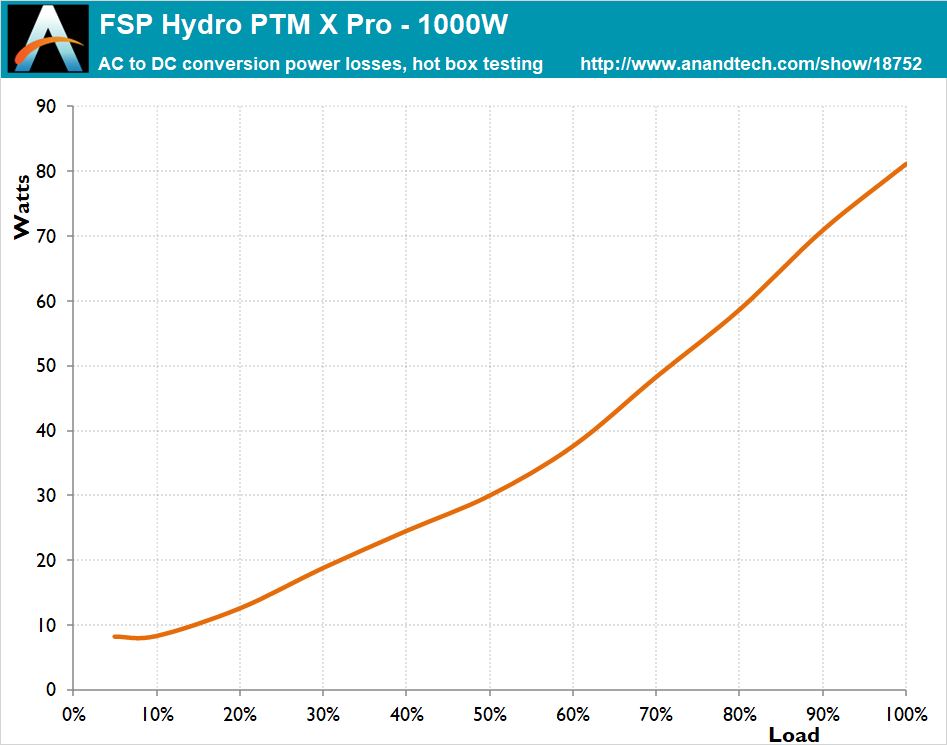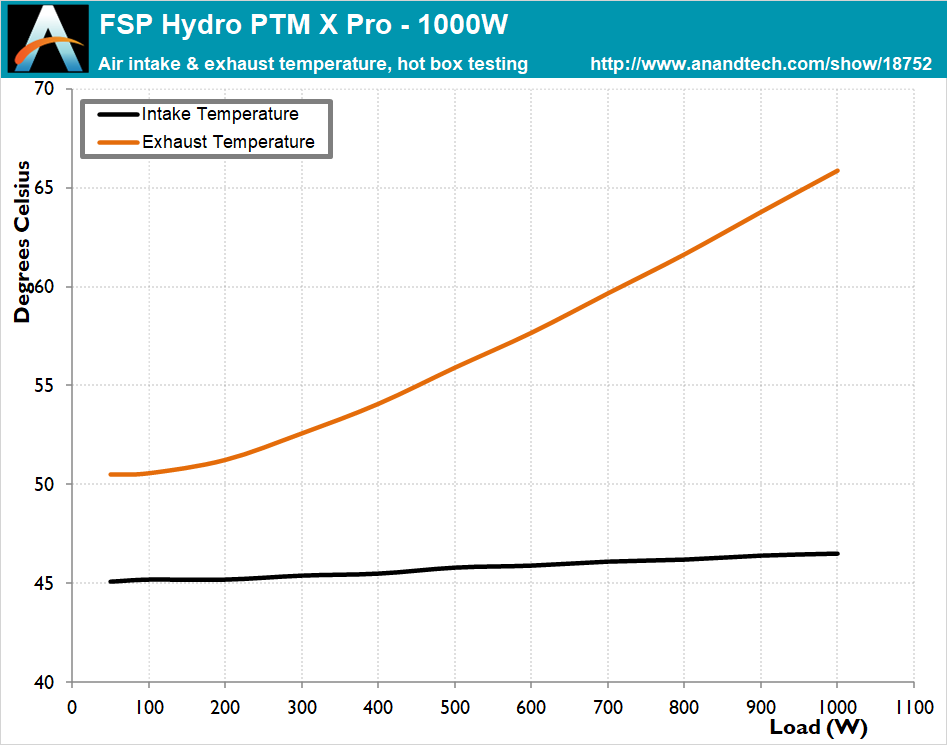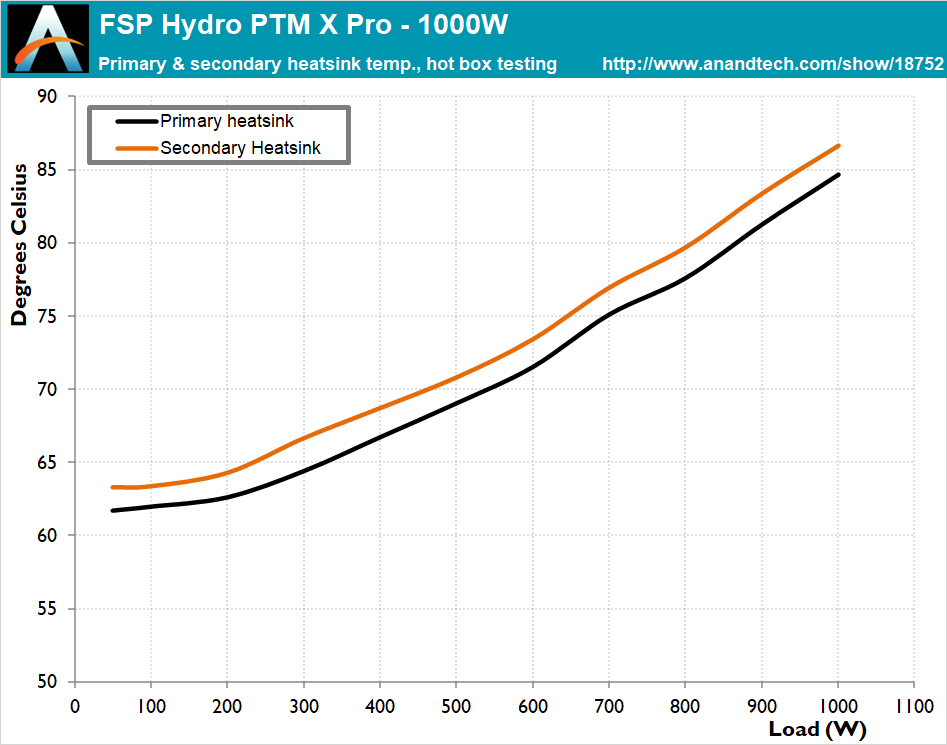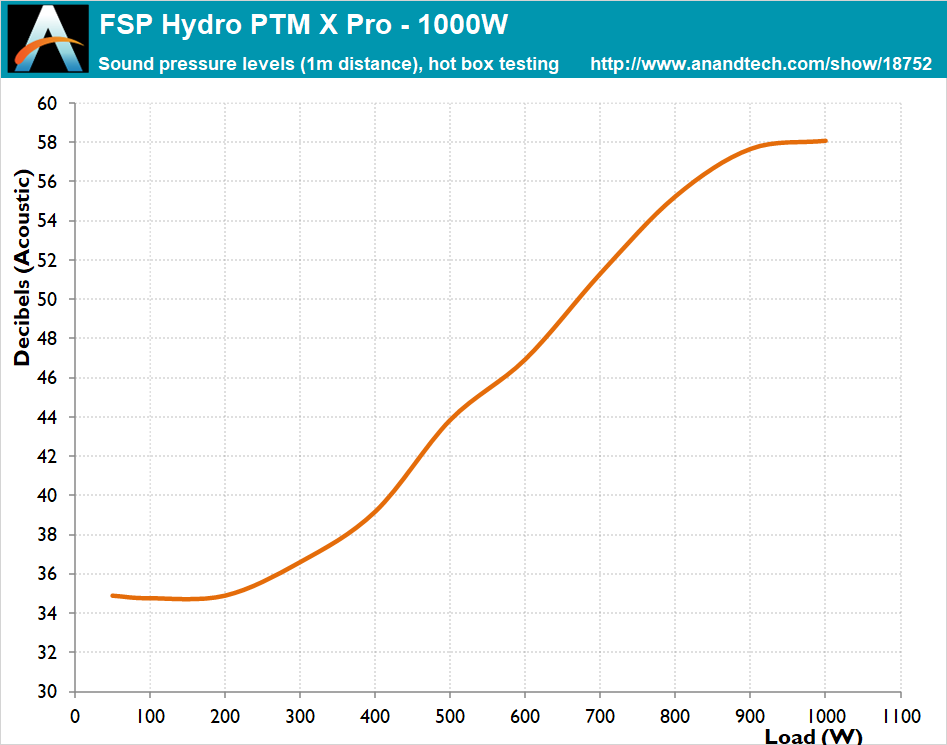The FSP Hydro PTM X Pro 1000W ATX 3.0 PSU Review: Premium Platinum Power
by E. Fylladitakis on March 7, 2023 8:00 AM EST- Posted in
- Cases/Cooling/PSUs
- PSUs
- 1000W
- FSP
- 80Plus Platinum
- ATX v3.0
- 12VHPWR
Hot Test Results (~45°C Ambient)
Every typical PSU design takes an overall performance hit when it operates in a hot environment. The FSP Hydro PTM X Pro displayed very high resistance to higher temperatures, with miniscule efficiency drop figures. The drop is an average of just 0.4% across the nominal load range and changes insignificantly when the PSU is fully loaded, suggesting that there is very little to no thermal stress.
The internal temperatures of the Hydro PTM X Pro are very low compared to any high output PSU operating in our hotbox. Although the temperature readings are on the heatsinks and not on the components themselves, these are amongst the lowest we have ever recorded from our testing of high output units and yet another indication that the engineers steered the design greatly towards reliability over everything else.
As expected, the hot environment changed the cooling profile of the Hydro PTM X Pro significantly. The cooling fan is relatively quiet when the load is very low but its speed will start increasing when the load goes above 200 Watt. The fan’s speed and, in extend, the noise increases almost linearly between 200 and 900 Watt load, at which point the fan reached its maximum speed. It is worthwhile to mention that the fan reached its maximum speed at a load much higher and while maintaining far lower operating temperatures than FSP’s 80Plus Gold certified unit.















2 Comments
View All Comments
achinhorn - Wednesday, March 8, 2023 - link
Hey -- great article thanks. Curious why you guys don't make direct comparisons to other contending PSU's? A simple table comparing basics like cost, wattage, rating, ATX conforming, with maybe one extra column for standout differences/product novelties would be so clutch. To take it further -- why not product comparison charts in each category you test in?My main purpose for visiting this site is to be able to make informed buying decisions; currently in order to do that effectively for PSU's using Anandtech as my resource, I'd need to read every single PSU article of the past ~year, compare the individual graphs from each category for each product across articles, and compile product data. That's a tall order. For other Anantech articles covering other PC components, I can just read the latest article and see where that product lands.
Techie2 - Wednesday, March 8, 2023 - link
I'm sure the various colored stickers will be a big selling point for the intended audience. Hopefully Mommy and Daddy won't be too upset with the price. It's about 1/5th the price of a good GPU card for gamers.The high-end components are some what wasted by not using the std. ATX case size or slightly larger and a 135mm fan. Customers could have performance, efficiency and acoustics all in one PSU package.